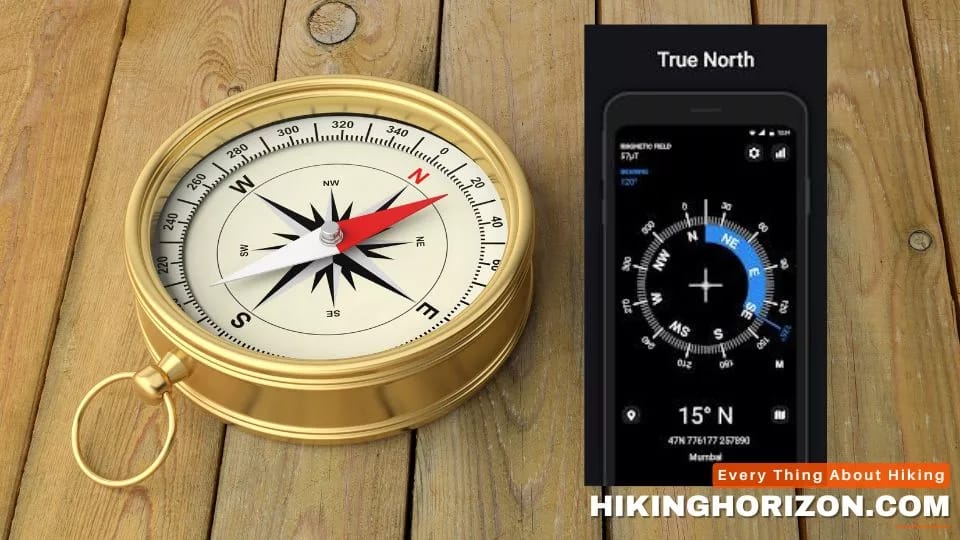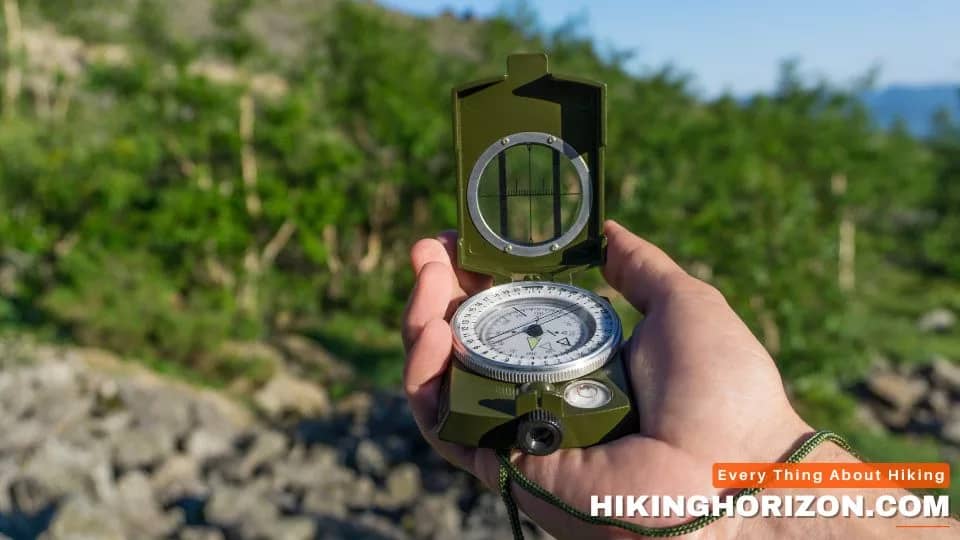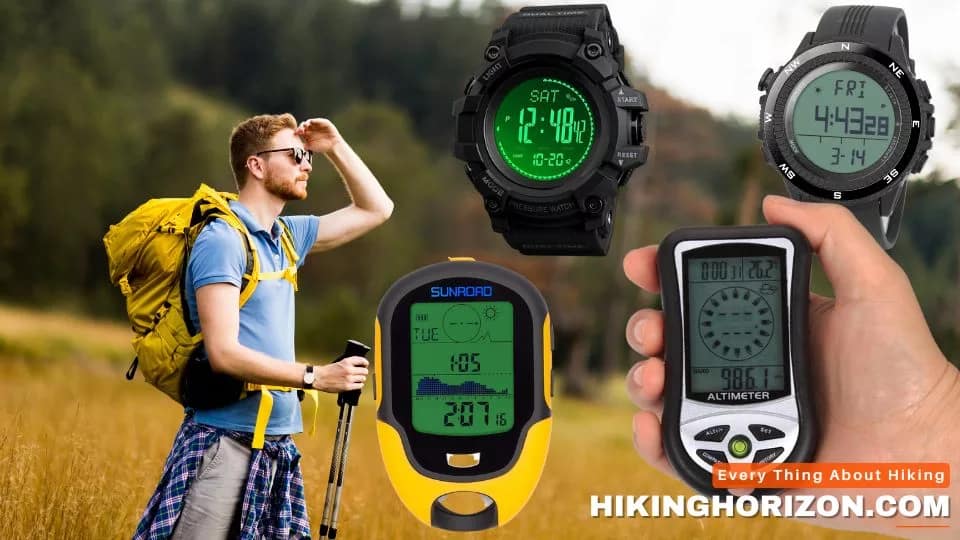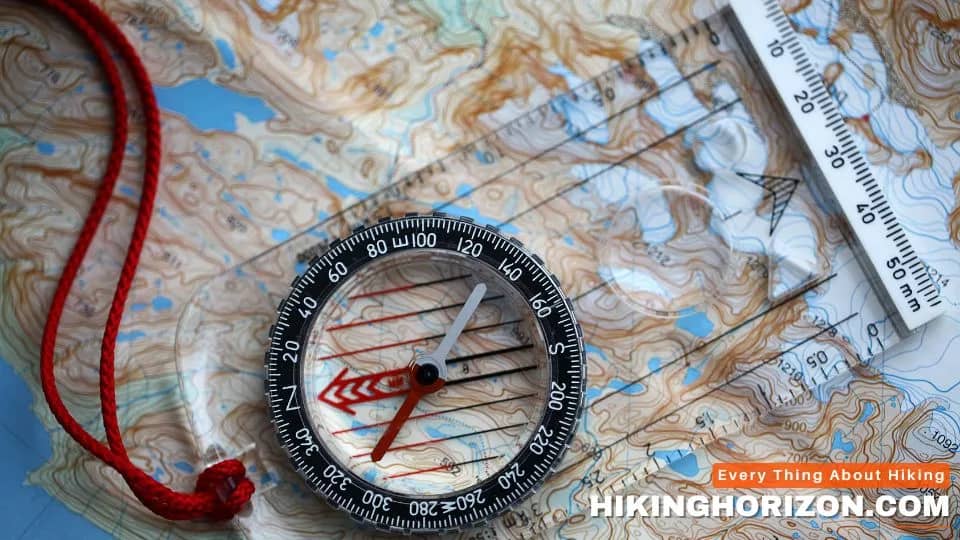
Compasses are one of those things that many of us take for granted today. We likely all learned how compasses work in school – that mysterious needle was always pointing North. But with modern technology like GPS and smartphone maps, do we really still need compasses in 2023?
In this complete guide, we’ll cover everything you need to know about compasses. We’ll look at the differences between magnetic compasses and digital compasses, how they actually work using the earth’s magnetic fields, when you’d want to use a compass over GPS, and how to use a compass accurately. After reading this, you’ll be a compass expert!
Table of Contents
What is a Compass, and Why Do You Need One?
A compass is a navigational instrument that uses the earth’s magnetic field to determine the north direction. Having a compass allows you to orient yourself and determine your bearing, which is essential for navigation and avoiding getting lost.
Compasses have been used for navigation for centuries, from their origins in ancient China to helping explorers traverse new continents. While GPS and technology have made compasses less vital for general navigation, they are still important survival tools to have in certain situations.
You need an accurate compass when GPS or other technology fails, such as when hiking or exploring off-trail, during emergencies, or when surviving in the wilderness. Compasses are unaffected by technology failures, satellite issues, or dead batteries. Having a compass and knowing how to use it properly can literally be a lifesaver.
Types of Compasses: Magnetic Compass vs Digital compass
There are two main types of compasses used today:

Magnetic needle compass
This is the traditional compass design that has been used for centuries. It consists of a small magnetic needle that aligns itself to the earth's magnetic fields, pointing towards magnetic North. Simple and analog.

Digital/electronic compass
Rather than using a magnetized needle, digital compasses use magnetic field sensors to detect magnetic fields, and microprocessors calculate direction. They show directions digitally.
The main advantages of digital compasses are:
- More accurate readings
- Not affected by magnetic interference
- Can calculate headings more precisely
However, digital compasses rely on electricity and technical components, so they have disadvantages:
- Require batteries or charging
- Can break or malfunction over time
- More expensive than simple magnetic compasses
A digital compass in something like a smartphone can be great for general navigation. However, a magnetic compass is often preferred for emergency or backup use for simplicity and reliability.
How Does a Magnetic Compass Work?
A magnetic compass works by aligning itself with the earth’s natural magnetic fields. Here is an overview of the science behind magnetic compass navigation:
- The Earth generates a magnetic field that surrounds it, making it akin to a giant magnet. The magnetic south and north poles near the geographic poles create these fields.
- The magnetic compass needle is a small magnet. The north end of the needle aligns with the earth’s magnetic north pole (in the geographic North).
- When turned freely, the magnetic needle will align to point to magnetic North. The compass housing indicates direction relative to the needle.
- By understanding the directions indicated on the compass housing, the compass can show which way is north to orient yourself.
The key is understanding the difference between a magnetic North and a true geographic North. The magnetic poles differ slightly from the true North and South poles, which is why compasses don’t perfectly point to the actual North Pole location. Depending on where you are, magnetic declination can cause a variance of several degrees between magnetic and true North.
Using magnetic compasses requires accounting for this declination. With experience, navigators learn to adjust compass readings to determine their true direction of travel when using magnetic compasses for navigation.
How Do Digital/electronic Compasses Work?
Digital compasses work very differently than traditional magnetic needle compasses. Rather than relying on a magnetized needle, digital compasses use a magnetometer and microprocessors to determine direction.
Here is an overview:
- The compass contains a magnetometer sensor that detects the strength and direction of magnetic fields around it.
- This sensor measures the magnetic field in horizontal and vertical planes relative to the device. It detects the inclination towards magnetic North.
- The microprocessor analyses this magnetic field data and uses algorithms to calculate which direction is north based on the earth’s magnetic fields.
- The calculated direction is then displayed on a digital screen, showing the compass bearing electronically rather than with a physical needle.
Digital compasses are much more technologically advanced, using similar sensors and processing as smartphones. The advantage is they are more precise and bypass issues like magnetic interference. But they rely on battery power and calibrated sensors to function.
When Should You Use a Compass Over GPS?
While GPS and digital maps on smartphones are used for most navigation these days, compasses still serve important purposes that GPS cannot replace. Hereare some key scenarios where using a compass is advisable:
- Hiking or exploring off-trail – GPS requires satellite signals, so it can fail in valleys, forests, and remote areas. A compass still works anywhere.
- Emergency or survival situations – GPS or phones can break, run out of battery, or lose signals. A compass always works to get your bearings.
- Backcountry adventure travel – Compasses allow navigation through true wilderness when relying solely on skills and analog tools.
- Disaster preparation – During emergencies like earthquakes or storms, digital infrastructure can be disrupted. A compass gives you direction.
- Improving navigation abilities – Learning compass skills develop awareness, self-reliance, and orientation abilities beyond just using apps.
The bottom line is that compasses provide a contingency for navigation and direction when technology fails you. They should be considered essential survival items for trips into the backcountry or emergency kits.
Related Article: What to Do If You Get Lost While Hiking? 16 Proven tips!
What is Magnetic North and True North?

Magnetic North and true North are different reference points used for navigational purposes. Since the Earth acts like a giant magnet, the magnetic north pole is the point to which compasses and magnets are attracted. However, this magnetic north pole does not exactly align with the true geographic north pole.
Magnetic North
The magnetic north pole is located hundreds of miles south of the true north pole in the Arctic Ocean in northern Canada. This difference between the magnetic and true north poles is why compasses do not exactly point to the northern axis of the earth’s rotation.
Magnetic North is the direction compasses point towards, using the earth’s magnetic field as a guiding mechanism. Smart phone compass uses built-in magnetometers to measure the direction and magnitude of magnetic fields, with sensors that electrically measure the direction. Using these sensors, digital compasses can determine direction using magnetic North as the reference point.
True North
True North, also known as geographic North, is the direction along the earth’s surface towards the true north pole, i.e., the axis of rotation. True North serves as the primary reference point for navigation.
Since magnetic fields and poles drift over time, the magnetic North is less consistent than the true North. While magnetic North is easier to sense with a compass, true North is more accurate for determining directions on a map. That’s why declination, the difference between magnetic and true North, needs to be accounted for in navigation.
Digital Compasses Calculate True North
Digital or electronic compass use their magnetometers and integrated microprocessors to calculate true North, rather than relying solely on magnetic North like traditional compasses. This makes digital compasses much more accurate for determining your bearing relative to true North. However, unlike traditional magnetic compasses, they rely on battery power and calibrated sensors.
Magnetic North is where compasses point based on detecting magnetic fields. True North is the direction of the geographic north pole, used as the primary reference for navigation. Accounting for the difference between the two is key for accurate navigation using compasses.
How to Use a Compass Accurately
To use any compass effectively, you need a basic understanding of navigational principles and practice using it properly. Here are some tips:
- Learn how to read your compass. Understand the cardinal directions, degree markings, and features of that specific compass.
- Account for magnetic declination. The variance between magnetic and true North depends on your location. Get declination from maps and apply this offset to compass readings.
- Take practice bearings on landmarks to get used to using the compass accurately. Double-check with GPS or maps.
- When navigating, take regular readings to stay on course and determine your position through triangulation.
- Consider environmental factors when navigating. Magnetic fields, weather, and terrain can impact readings. Experience and correct usage is key.
- Use a compass in conjunction with maps and other tools. Compasses provide directional data, while maps give overall situational awareness.
- Invest in a quality, reliable compass. A basic orienteering compass is versatile, but consider features like mirror sights to increase accuracy.
With practice navigating under different conditions, you’ll become adept at using a compass in the field. It takes experience, so don’t rely solely on a compass for backcountry navigation until you’ve honed your skills.
Smartphone Compasses – Convenient but Unreliable
Many smartphones now include digital compasses in their sensor arrays. This gives easy access to compass bearings through the smartphone screen. While very convenient, smartphone compasses should not be relied upon as your only compass.
Reasons smartphone compasses are unreliable include:
- They are not designed for precision navigation. Their sensors tend to be less accurate.
- They only work when the phone has a charge, and the software is functional.
- They can’t be calibrated or controlled for optimal accuracy.
- The compass is affected by electromagnetic interference from the phone itself.
- Readings are affected when not held horizontally and level.
- They lack optimal compass features found in dedicated devices.
The bottom line is smartphone compasses are handy for getting a general sense of direction. But for true navigation, especially in emergencies, you should not depend solely on your phone’s compass. Always carry a dedicated, mechanical compass as a backup.
Pros and cons of using a digital compass vs magnetic compass
Here is a comparison of the pros and cons of using digital compasses versus traditional magnetic compasses:
Here is a comparison of the pros and cons of using digital compasses versus traditional magnetic compasses:
Digital Compass Pros:
- More accurate readings and the ability to pinpoint true North
- Not affected by magnetic interference
- Can give very precise degree/compass bearing readings
- Some models calculate elevation and other data
- Displays digital readout clearly
Digital Compass Cons:
- Requires battery power or charging to operate
- More expensive and delicate than magnetic types
- Can break or malfunction over time
- Not as reliable in emergency situations
- Can be impacted by electrical interference
Magnetic Compass Pros:
- Does not require any power source
- Simple and easy to use
- Inexpensive compared to digital versions
- Reliable in emergencies and survival situations
- Not prone to failure like electronics
Magnetic Compass Cons:
- Magnetic anomalies can throw readings off
- Less precise readings compared to digital
- Needle does not point exactly to the true North
- Harder to use at night or in low light conditions
- More prone to user error in reading
Key Takeaways - Your Compass Cheat Sheet

Using a compass effectively takes practice, but it can be a valuable skill for navigation and survival. Here are some key tips:
- Traditional magnetic needle compasses are reliable backups to digital navigation tools.
- Compasses work based on the earth’s magnetic fields, pointing towards magnetic poles.
- Account for differences between magnetic and true geographic North.
- Digital compasses use sensors and processors to calculate direction more precisely.
- Use compasses when hiking off trail, in emergencies, and when GPS fails.
- Learn how to take accurate compass readings using declination adjustment and triangulation.
- Smartphone compasses are convenient but less reliable than dedicated compasses.
- Invest in a quality compass and practice navigation skills regularly to become proficient.
Understanding how compasses work and when to rely on them can improve your navigation and readiness for the backcountry or emergencies. With a quality compass and proper skills, you’ll always have a way to find your way when modern technology fails.
Frequently Asked Questions (FAQs)
What is the difference between magnetic north and true north?
Magnetic North is where the compass needle points based on the earth’s magnetic field. True North is the direction of the geographic North Pole and what maps are based on. There can be variances between them.
How accurate are digital compasses?
Digital compasses using sensors, calibration, and processors are generally more accurate than traditional magnetic needle compasses, especially in determining true North. However, performance can vary based on quality.
What causes compass errors?
Factors like magnetic interference, improper use, low-quality compass construction, or environmental conditions can cause errors in compass readings.
Should I rely on my smartphone’s compass?
Smartphone compasses are convenient but less accurate than dedicated navigational compasses. They lack features and reliability. Carry a dedicated compass as a backup.
Do I still need a compass when hiking?
Compasses are essential when hiking off-trail or where GPS signals are unreliable. They serve as a backup to GPS and help hone navigation skills.
How do compasses work?
Compasses work using the earth’s magnetic field. The magnetic needle aligns to the magnetic North, while digital compasses use sensors to calculate direction.
Where was the compass invented?
Compasses were invented in ancient China for fortune-telling and geomancy before being used for navigation. The modern magnetic compass arose in medieval Europe.
What should I look for when buying a compass?
Look for durability, reliability, quality materials, precision, and useful features like declination adjustment, luminous dial, sighting wire, etc.
Can smartphones replace compasses?
No, smartphone compasses are unreliable enough for precision navigation due to accuracy issues, disruption, and lack of dedicated features. Carry a real compass as a backup.
How do you calibrate a compass?
Calibration involves adjusting compass bearings to account for deviation and declination between magnetic and true North based on your position. Use maps or GPS waypoints to fine-tune.
Conclusion: Compasses Remain an Essential Navigation Tool
While digital maps and GPS technology pervade our modern world, the trusty compass remains an indispensable tool for navigation and survival. A compass is a navigational tool that employs a small magnetic needle to align with Earth’s magnetic field, indicating the cardinal directions of North, south, east, and west. It is an invaluable device for hikers, sailors, and explorers who rely on it to find their way in unfamiliar terrain or when visibility is low. The ancient invention of the compass has stood the test of time and remains a reliable and essential tool for navigation today.
Whether you need an emergency compass like a button compass or a full navigational tool like a compass with azimuth, compasses continue providing critical functionality. From determining declination between true geographic North and magnetic north fluxgate sensors to simply giving you your bearings when lost, compasses serve purposes no smartphone can.
Next time you are off the grid, make sure you have a compass in your pack. A quality compass used properly might just save your life one day. Don’t forget that compasses don’t need batteries or signals to determine which direction is north!

John Smith
John has been an avid hiker for over ten years and has explored some of the most challenging trails across the USA. He has completed multiple long-distance hikes, including the Appalachian and Pacific Crest Trails. John is also a certified hiking guide, leading several hiking trips for groups of all ages and skill levels.

John Smith
John has been an avid hiker for over ten years and has explored some of the most challenging trails across the USA. He has completed multiple long-distance hikes, including the Appalachian and Pacific Crest Trails. John is also a certified hiking guide, leading several hiking trips for groups of all ages and skill levels.




Awesome! Its genuinely remarkable post, I have got much clear idea regarding from this post
I’m often to blogging and i really appreciate your content. The article has actually peaks my interest. I’m going to bookmark your web site and maintain checking for brand spanking new information.